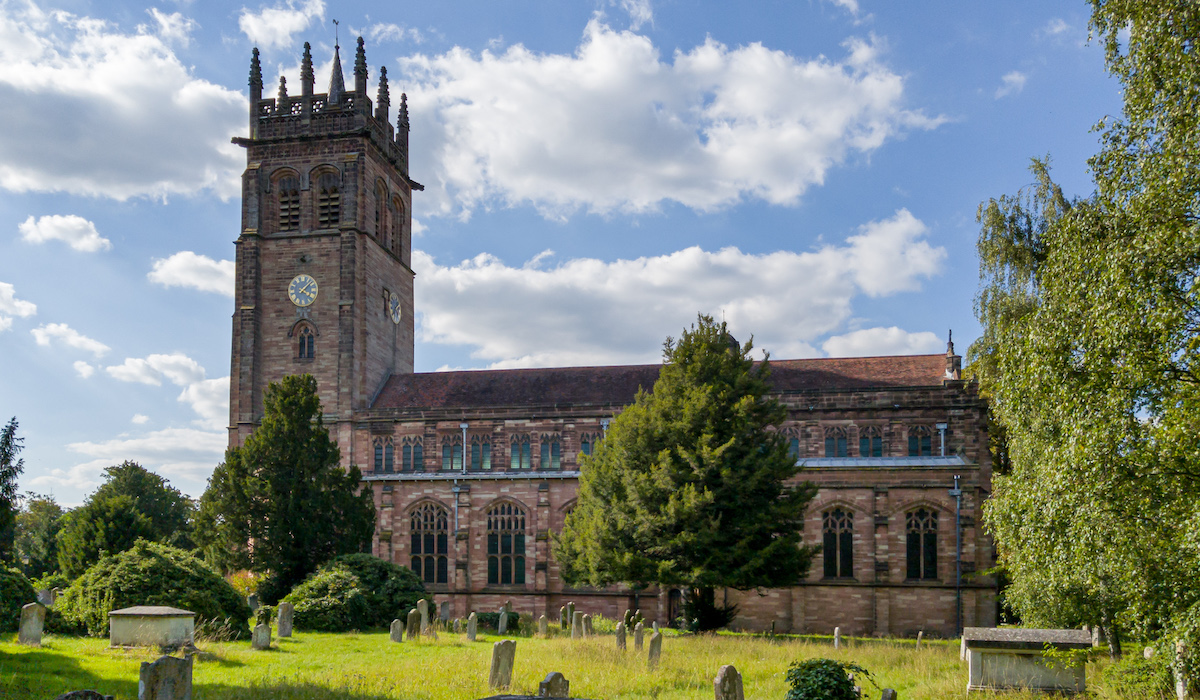From the 1830s onward, a movement developed in the Church of England that sought to reclaim a classic High Church tradition within Anglicanism that gave weight to the apostolic succession, sacraments, the Christian year and festivals, and liturgical order. Some, though not all, within this group sought to align the church more closely with Roman Catholic thought—theologically, spiritually, and liturgically. The origins of this movement lay in the historic city of Oxford, the location of the martyrdoms of the Protestant bishops Hugh Latimer and Nicholas Ridley, who had been executed in 1555, and Archbishop Thomas Cranmer, in 1556. The leading members were John Henry Newman, John Keble, Hurrell Froude, and, a little later, Edward Pusey. They were known as the Oxford Movement, and sometimes the Tractarians, named after their publications The Tracts for the Times, which appeared from 1833 to 1841. The group was controversial. Froude’s ascetic practices exposed by his work Remains, published in 1838 after his death at the tender age of 32 in 1836, shocked not only evangelicals but also a wider public. Nevertheless, the Oxford Movement became increasingly influential across a broad range of Anglican practice. The last of the Tracts, Tract 90, written by Newman, was an attempt to give a Catholic interpretation to the Church of England’s Thirty-Nine Articles, which was rather like trying to square a circle. Newman left for Rome in 1845; of the other originators of the movement, Froude was dead and, significantly, neither Keble nor Pusey followed Newman.
John Keble was a poet, priest, and theologian. Born in Gloucestershire in 1792, he entered Oxford in 1806 (yes, at the age of 14!), graduated with double honors in 1810, and became a fellow of Oriel College the next year. He was ordained in 1816, becoming a curate to his father while remaining in Oxford until the death of his mother in 1823, when he returned home to assist in his father’s parish.
In 1827 Keble published The Christian Year. This was a poetic masterpiece with over a hundred editions and some 375,000 copies sold by 1873, when the copyright expired. The devotional aid consisted of poems for Sundays and festival days. His aim was to encourage piety within the context of the liturgical calendar. Indeed, this book of poetry may represent his greatest impact, a spiritual rather than a political legacy. However, the work also marked Keble out as a High Churchman, and the success of The Christian Year brought him back to the attention of Oxford. In 1831 he was elected professor of poetry, a post he held until 1841.
This sets the scene for his most famous sermon, “National Apostasy.”
Many towns and cities held “assizes,” courts designed to deal with the most serious criminal and important civil cases presided over by senior judges visiting from London. The opening of the assizes was a significant civic occasion and normally the occasion of a church service attended by the judges and other civic dignitaries. The selection of the preacher for the assize service in Oxford traditionally lay with the Fellows of Oriel College, and they had among their number just the person for the job. Hence in Oxford, on July 14, 1833, John Keble, priest of the Church of England, professor of poetry and Fellow of Oriel College, was invited to give the sermon, addressing the judges, the great and the good, in the university church of St Mary. The vicar of the church was John Henry Newman. Fifty years later Newman referred to this sermon, “National Apostasy,” as the beginning of the Oxford Movement.
What was this national apostasy? The moral failure of the nation? The challenges of child labor? The failure to bring the gospel to the working people? The protection of the Sabbath? On those topics, the evangelicals would have sat to attention. Keble, however, was addressing something deeper, the very nature of the church, which was, in the view of the High Church Oxford clerics, under threat.
In the background of the “National Apostasy” sermon was a bill before Parliament introduced by the Whig (liberal) government of Earl Grey. What possible relevance could the Irish Church Temporalities Bill have to a discussion on the role, purpose, and nature of the church? How could a sermon even tangentially dealing with the subject launch a spiritual movement?
The bill sought to reform and reorganise the Irish church. The population of Ireland was largely Roman Catholic (over 80%). Nevertheless, as a legacy of the attempt over many decades, if not centuries, to impose Protestantism upon an unwilling populace, there remained numerous endowed bishoprics of the Church of England serving a small Protestant population supported by tithes and taxes—levied on the entire population irrespective of religious tradition. There were 22 such bishoprics, and the Whig government proposed to suppress 10 and remove clergy who had no parishioners. Income would be redistributed to church buildings and poorer clergy, and the tithe on tenants was abolished (and moved to landlords). Some revenues released from the reforms were reserved to the state.
The objections to the bill focussed on two aspects. First, the diversion of church revenue to secular matters under the control of the state. Second, the potential reduction of Protestant influence in Ireland through the diminution of the number of bishoprics. If 10 bishoprics were suppressed, why not 12, or 20? The number of bishops required, or otherwise, by the church is not a matter for the state. This actually had the effect of rallying Protestant evangelicals to the cause: Sir Robert Inglis, the MP for the University of Oxford, and Lord Ashley, later the seventh Earl of Shaftesbury, both voted against the bill. For Keble and the High Churchmen, however, it was the principle of state interference in the life of the church and the threat to nature of the church as a spiritual society with spiritual responsibilities that raised their hackles. What right did the House of Commons have to interfere?
This was the apostasy that Keble complained about.
He took as his text for the sermon 1 Samuel 12:23: “As for me, God forbid that I should sin against the Lord in ceasing to pray for you: but I will teach you the good and the right way.” He discussed the demand of the people of Israel for a king and exposed the heart of the question by noting that this was “a perpetual warning to all nations, as well as to all individual Christians, who, having accepted God for their King, allow themselves to be weary of subjection to Him, and think they should be happier if they were freer, and more like the rest of the world.”
The nearest Keble came to actual comment on the bill itself is when he noted that “disrespect to the Successors of the Apostles, as such, is an unquestionable symptom of enmity to Him,” and that such disrespect, general and national, might be driven not by faith but by “human reasons of popularity and expediency.” Such a nation “stands convicted in His sight of a direct disavowal of His Sovereignty.” This constitutes the national apostasy of which Keble talks. The point was not lost on his audience, representatives of an erring government.
In the face of this Erastian encroachment (Erastianism being the principle of the supremacy of the state in the affairs of the church), the only viable response was to serve a remonstrance to the nation and intercessory prayer to God on behalf of that nation. The church was under threat and must respond.
What were the consequences of the sermon both for the Oxford Movement and for Keble himself? In the immediate aftermath, Newman sought to rally support to the cause. In that same year, the Tracts for the Times commenced publication. Keble himself wrote several of the Tracts, including, nos. 4 (“Apostolic Succession”), 13 (“Selecting Sunday Lessons”), 40 (“Baptism”), 52, 54, 57, 60 (“Sermons for Saints’ Days”), and 89 (“Mysticism in the Fathers”). You can see from these interests the High Church priest and theologian.
Indeed, Keble, shy and reserved yet strong-minded and passionate, was at heart a priest who saw the Oxford Movement as an opportunity to bring renewal to parish life, to recover the classic High Church emphases, to write, and to pastor a parish. This is almost certainly why he left Oxford in 1836, one year after marriage, to settle as the vicar of Hursley, near Winchester in Hampshire, where he remained until his death in 1866. His poetry has found its way into hymns, and in addition to the Tracts and other works, he edited a Library of the Fathers. He took a different direction from Newman, and he certainly regretted Newman’s departure for Rome. Perhaps his passions and interests in parish renewal kept him in the Church of England.
Priest, poet, theologian, pastor—a High Churchman committed to the liturgical year, the order of worship, the apostolic succession, and the sacraments: Keble was influential beyond any expectation, right up to today’s Anglo-Catholic revival in the United States, but truly at home in the parish.

